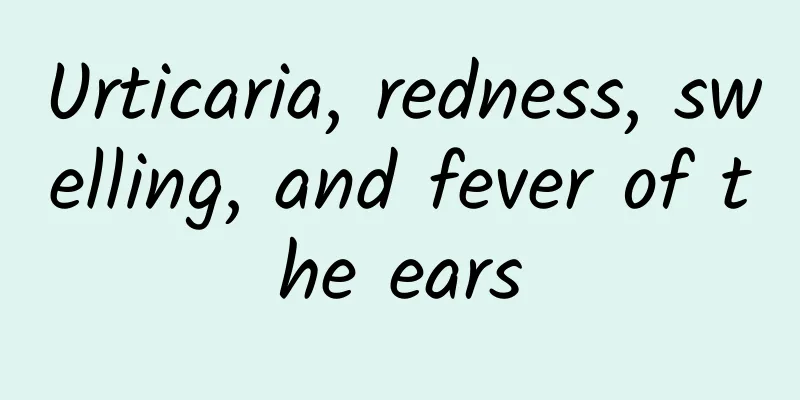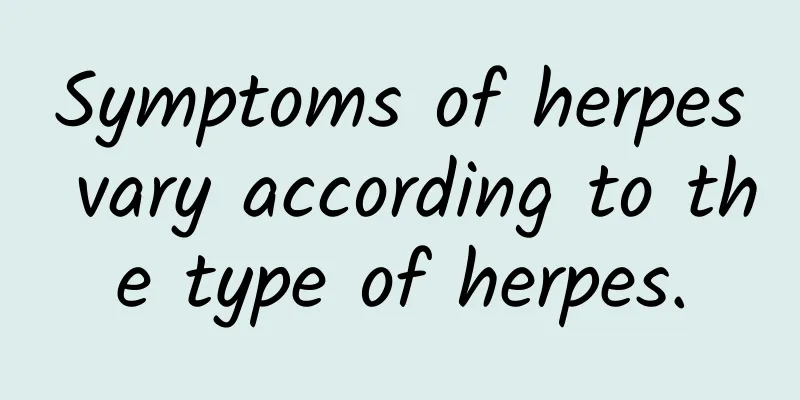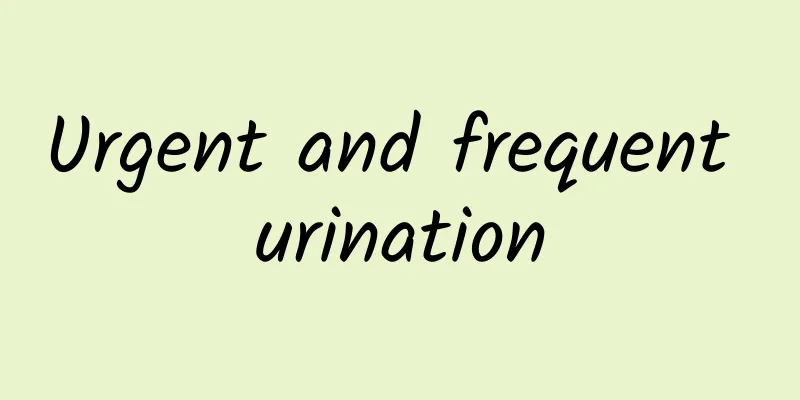Urticaria, redness, swelling, and fever of the ears

|
Redness, swelling and heat in the ears may be caused by urticaria. Many people probably don’t know that urticaria is a skin disease with many types, and the symptoms of each type are different. So once you suspect that you have urticaria, you should go to the hospital for treatment. Do not use skin medicines at home on your own, which will affect later treatment. This article introduces the classification and clinical manifestations of urticaria. Let’s take a look and learn about it. What are the symptoms of urticaria 1. Allergic urticaria Allergic urticaria is mostly caused by allergic mechanisms. Every time an attack occurs, the hands and feet are extremely itchy, the limbs are numb, breathing is difficult, the head is numb, and then some soybean-sized blister-like rashes will appear on the body. I had been to the street before each attack, and the attacks usually occurred at night. When an attack occurs, take some medicine and it will disappear completely in about 3 hours. Patients should pay attention to this. 2. Cold urticaria Some people will have itchy skin when they are exposed to cold wind every winter, and even hives will appear on the exposed skin or the parts that come into contact with cold objects when they come into contact with cold wind, cold water or cold objects. In severe cases, numbness of hands and lips, chest tightness, palpitations, abdominal pain, diarrhea, fainting and even shock may occur. Cold shock is one of the causes of death from drowning. Sometimes eating cold drinks can cause swelling of the mouth and larynx. Sometimes cold urticaria is not a simple skin disease, but a symptom caused by other diseases, such as cryoglobulinemia, paroxysmal cold hemoglobinuria, cryofibrinogenemia, cold hemolysis, etc. If you find such symptoms, you should go to the hospital in time. 3. Symptoms of factitious urticaria Some people suddenly become unable to withstand scratching without knowing when. After scratching their skin with their hands or scratching their skin with a blunt object, strip-like bumps appear along the scratches, accompanied by itching, which soon subsides. Symptoms of cholestatic urticaria: More common in young people, the rash appears after exercise, heat, emotional stress, or eating hot food. The rash is very small and mostly spreads to the chest and upper limbs, and is extremely itchy. It disappears within half an hour to an hour, or after rinsing with cold water. Young friends should pay more attention in their lives. 4. Symptoms of papular urticaria Papular urticaria is mostly caused by insect bites and is common in infants and children. The skin lesions are often round or fusiform wheal-like lesions with needle-sized to bean-sized blisters on the top, which are distributed scattered or in clusters. It often occurs on the extensor side of the limbs, trunk and buttocks. Generally, the skin lesions will disappear on their own after several days to a week, leaving temporary pigmentation spots. Skin lesions often appear in batches and last for a period of time. Papular urticaria is extremely itchy and may cause pyoderma due to repeated scratching. Treatment of urticaria 1. Peach leaves can be used as bath agents The juice of peach leaves can inhibit the itching of urticaria and has the effect of preventing and treating urticaria. Take raw peach leaves, dry them in the shade, mash them, put them in a gauze bag, and place it in the bathtub. Boil water and pour it into the bathtub. After it cools to the appropriate temperature, slowly soak your body in the bathtub. The effect is very good. 2. The decoction of loquat leaves is also effective The decoction of loquat leaves is also effective in treating prickly heat and urticaria. Take three leaves, crush them with your hands, and put them into 500 grams of water and boil them. After the boiled juice cools down, use it to clean the affected area. You can also put loquat leaves in a gauze bag, put it in the bath water for a while, and use it as a bath agent. Things that should be avoided when the rash is severe Chinese medicine believes that foods that will pollute the blood will make urticaria worse. Foods such as stale shrimp, crab, croaker, oyster shellfish, bamboo shoots, glutinous rice, chocolate, coffee, spices, sugar, etc. should be avoided when the rash occurs, and people who are prone to urticaria should always pay attention to the consumption of these foods. In addition, foods that cause urticaria should be avoided. 3. If it is caused by fish and shrimp, you can use perilla If urticaria occurs due to eating fish, shrimp, or crab, you can eat a lot of fresh perilla leaves, or drink the decoction of perilla leaves. The method is to boil 5 grams of dried perilla leaves with 200 grams of water. 4. Chronic urticaria can be treated with sesame People whose skin is prone to urticaria can eat sesame seeds regularly to improve their physical constitution, increase their physical strength, strengthen their skin, and reduce the risk of rashes. Eating black sesame paste regularly has good effects. |
<<: What to do if you have scalp and ear neuralgia
>>: What medicine should I take for ear pain caused by internal heat?
Recommend
Things to note when doing blood gas analysis
With the development of medicine, many examinatio...
The efficacy and function of water pinellia
What are the effects and functions of water pinel...
What to do if your menstrual flow is light at 45
For many women, the amount of menstruation become...
You have to know the effects and taboos of white crystal bracelets!
Crystal is one of the gifts that the earth has gi...
How much does Cordyceps sinensis cost?
Cordyceps is a dried complex of the fruiting body...
Quickly eliminate buttocks
The symptom of nodules on the buttocks mainly occ...
What should I do if my face is swollen due to tooth inflamed?
Generally, facial swelling caused by toothache is...
Ectopic pregnancy rate
Since the egg and sperm combine in the female bod...
Cyperus rotundus
Medicinal herb, mainly used to treat drowsiness, ...
Seasonal allergic rhinitis
Seasonal allergic rhinitis only occurs in a certa...
How long before meals should I take Chinese medicine?
Although most people take medicine to treat their...
What to do about high blood pressure
Everyone's physical constitution is different...
What to do if blisters appear on the body
When I went to bed last night, I felt very itchy ...
Precautions for viral hepatitis in the elderly
Viral hepatitis in the elderly is one of the dise...
It replenishes kidney qi and treats gynecological diseases, and is loved by both men and women
Taixi acupoint is where the kidney meridian's...









